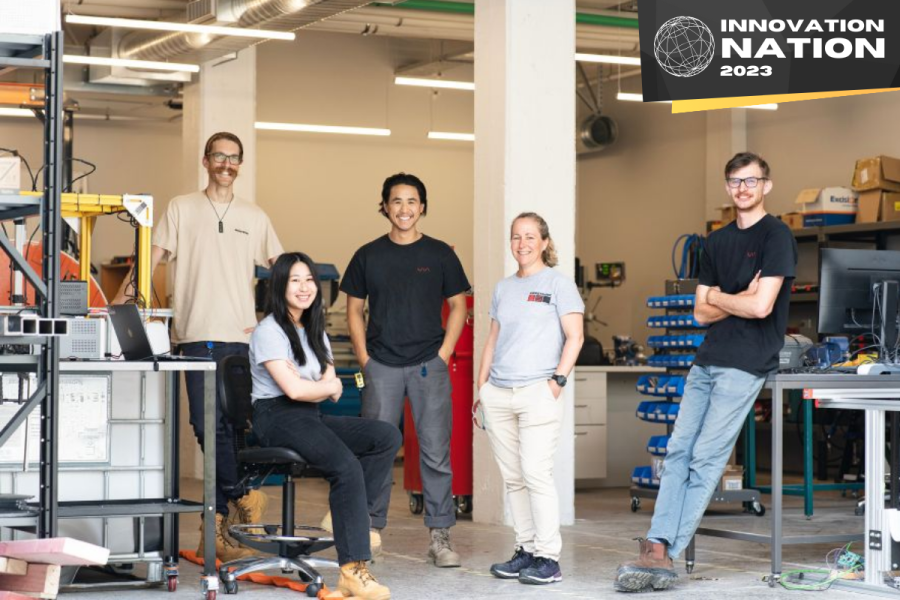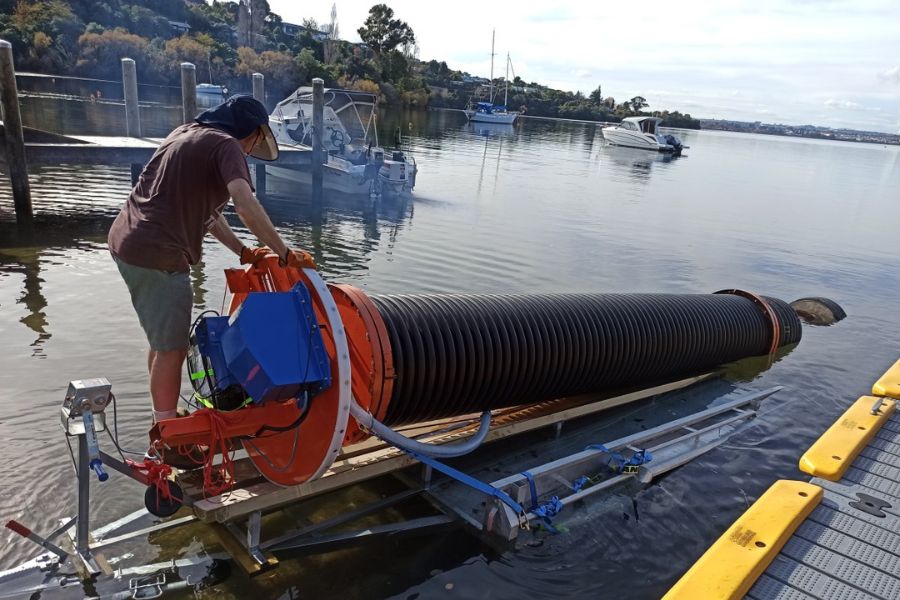EnergyBank’s wind energy storage solution aims to decarbonise the world’s largest economies

A startup, with roots in New Plymouth, is working on an energy storage solution that has the potential to decarbonise large economies the world over. And it’s banking on the energy sector to grab onto the innovation with both hands.
EnergyBank founder Tim Hawkey was destined for a career in the energy industry, even though it might have taken him a few years (including a stint as a skydiver) to realise it. He grew up in, on and around power stations, with his dad managing various ones around New Zealand in the 1990s, and a passion for engineering was further fueled by a high school physics teacher who got the then-teenager Hawkey into rockets.
“I had a couple of years off after finishing school, then went to Auckland University and completed an engineering degree. This was about the time that Rocket Lab was starting to make a name for itself – which showed me that there was the ability to create a viable industry out of nothing,” says Hawkey.
“I found that very inspiring, so in my final year I got involved in the Velocity program which was all about entrepreneurship. The framework was centred around the fact that good, successful businesses are rooted in solving fundamentally hard problems, and I knew that’s what I wanted to do – I just had to find a problem to solve.”
So with a clear ambition and $3,000 New Zealand dollars in his bank account Hawkey moved to San Francisco. Knowing it was a hub for all things technology and entrepreneurship, he hoped that it would act as a base camp while working towards establishing his own business – and from designing kitchens for billionaires in Solidworks to sleeping in the back of his Ford Expedition SUV, life lessons were aplenty.
“I was doing what I could to save as much money as possible, while looking for a problem that grabbed me. And then one day I remember reading a blog from a well known entrepreneur who listed the ten things he would fund the development of solutions for,” says Hawkey.
“One of them was the issue of energy storage and funnily enough, despite almost having a religious attachment to energy, it wasn’t something I had thought about. But it was enough to make me quit my job and head back to New Zealand to move in with my parents in New Plymouth.
“This ended up being about three months before Covid hit and cleantech wasn’t hot back then. But I still got underway, working from a coworking space where possible, bringing on board other co-founders, talking to potential customers and continuing to research various iterations of what we were aiming to do.”
Today, what Hawkey and his team at EnergyBank are looking to achieve is two-fold. At the moment, wind farms are only favourable to a point. The intermittent nature of offshore wind generation means that generation is not always happening (i.e. the wind isn’t always blowing) and when the wind is blowing, all wind farms in that area are generating energy so the market price drops with the oversupply. This type of renewable energy ends up being undervalued because it cannot provide dispatchable supply to the market.
Also, because current floating technology only allows for installation of wind turbines in relatively shallow coastal areas, it has left much of the world’s coastlines unable to benefit from this type of renewable energy.

“Fixed-bottom and floating wind turbines are currently projected to only be cost-effectively deployed in water depths up to 1000m – partly due to the cost of mooring lines at this depth. However, much of the world’s coastlines quickly drop off into much deeper water. Overall, this constrains the size of the market floating offshore wind can competitively serve,” explains Hawkey.
So the first port of call is a way to help floating offshore wind farm developers overcome the intermittency of wind energy, by utilising energy storage. Secondly, EnergyBank is also poised to enable a greater capacity for wind generation, with technology that means wind farms can go into deeper waters than they ever have.
“Based on analysis of ocean depth, available wind resources and proximity to large cities, we have identified 14 million square kilometres (approximately 2.7% of earth’s surface area) of viable space for grid-connected, utility scale DOGES (Deep Ocean Gravitational Energy Storage) systems,” explains Hawkey.
“By providing a storage solution that also serves as an economical mooring system, EnergyBank enables floating offshore wind farms to enter deeper waters and also secure a better price on the energy they sell because they can store energy to dispatch in times of higher demand. This ultimately allows greater opportunity for renewable energy generation.”
Importantly, EnergyBank’s solution is also scalable, in that they are not going to run out of space to build them. And, relatively speaking, they don’t take up much space as they are a vertically oriented mechanism.
“What this could mean for the world’s energy system when it reaches full scale is the potential to decarbonise large economies, the world over. For countries like Japan, who currently can’t benefit from the use of wind generated electricity, they could actually replace their use of fossil fuels,” says Hawkey.
Last year Hawkey was able to put his Velocity learnings to good use when he put together his pitch deck five minutes before pitching to a group of investors. He needn’t have worried too much though, with nine VCs (venture capitalists) wanting in on it and the final result securing a first fundraising round of $2.7 million dollars.
“It comes down to market validation and is a bit like a cookbook recipe that you follow to help make the whole investment process work well. From that I was able to make the move to Auckland, build a great team and rather serendipitously, we ended up in Rocket Lab’s original workspace.”
With floating wind turbine technology scaling quickly since its inception in 2019, Hawkey knows now is the time to put everything he can into EnergyBank. And he believes they are almost there.
“We started with market simulations that looked at the whole world, in order to uncover the sweet spot of energy storage. It’s about ensuring you have the right capacity for storage before you start getting diminishing returns. So now we have a unitised scale to test, prototype and then scale back up to do the job.”
But all in all, Hawkey remains the typical humble Kiwi when it comes to talking about all that he has achieved so far.
“I feel privileged to be able to pay myself and have a bunch of smart people working with me. It’s certainly challenging, but also very rewarding.”
Story by Erin Harrison.








